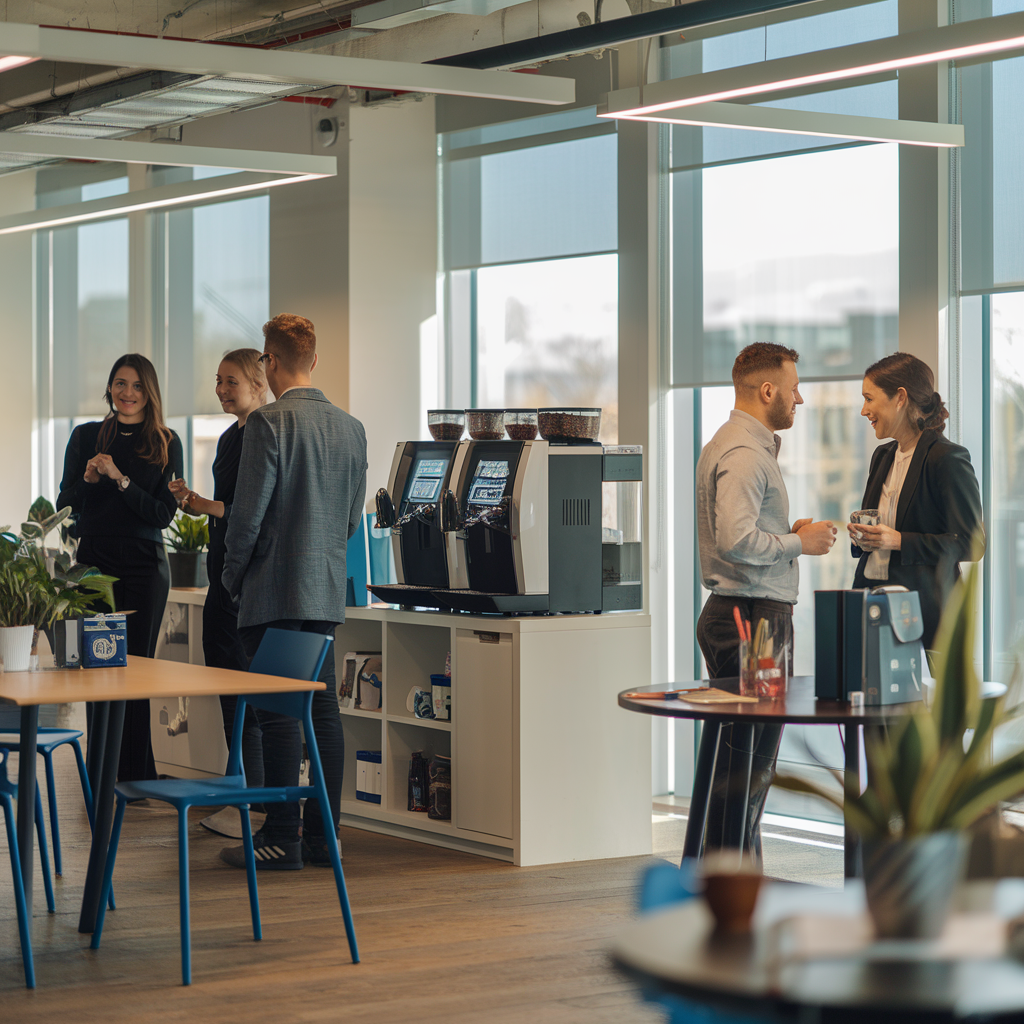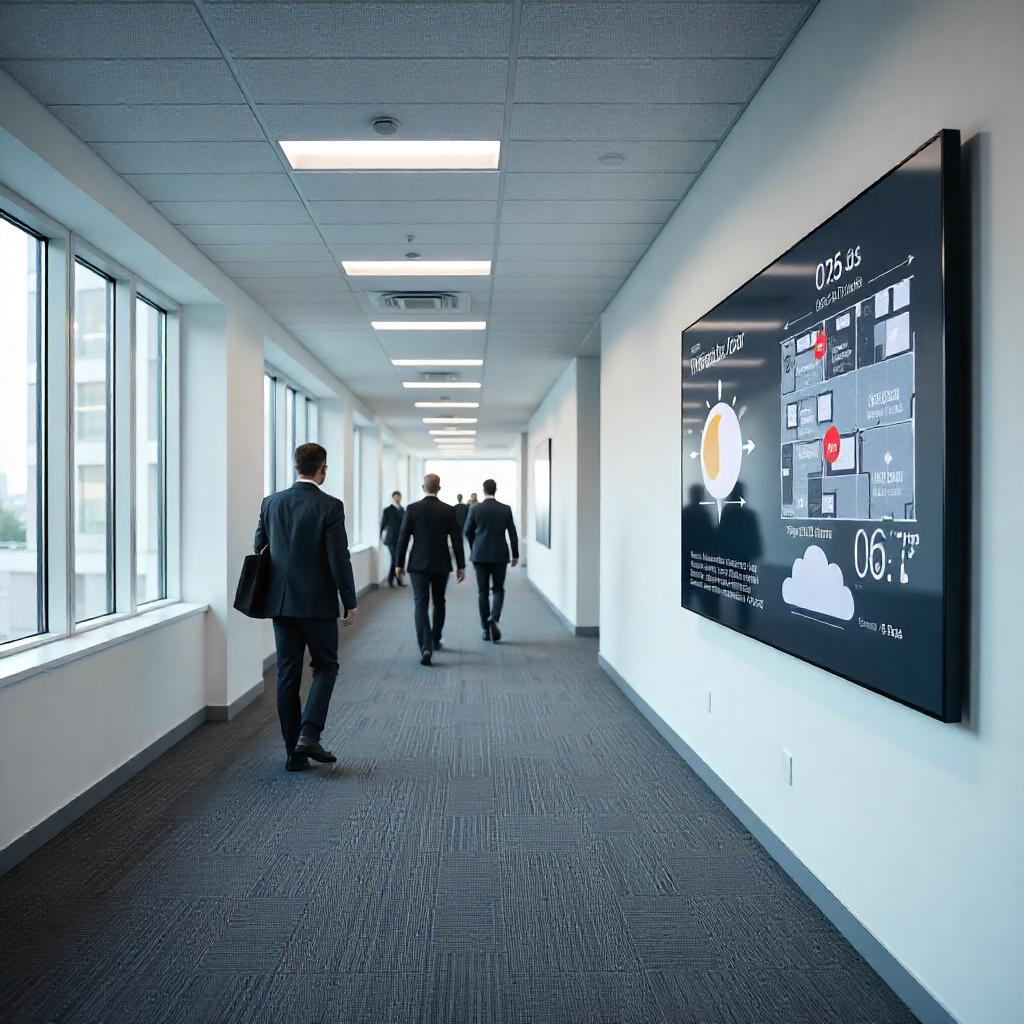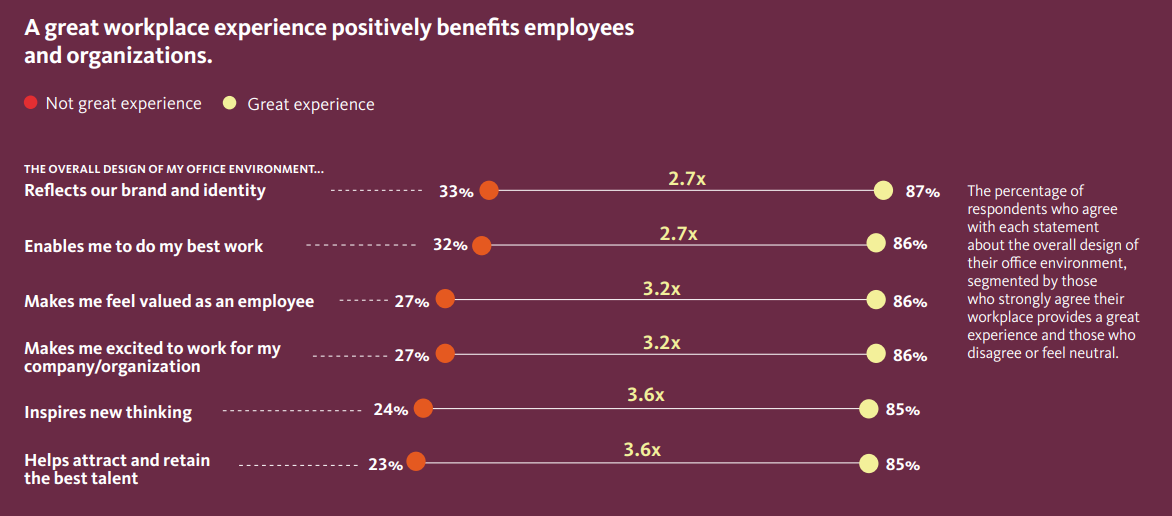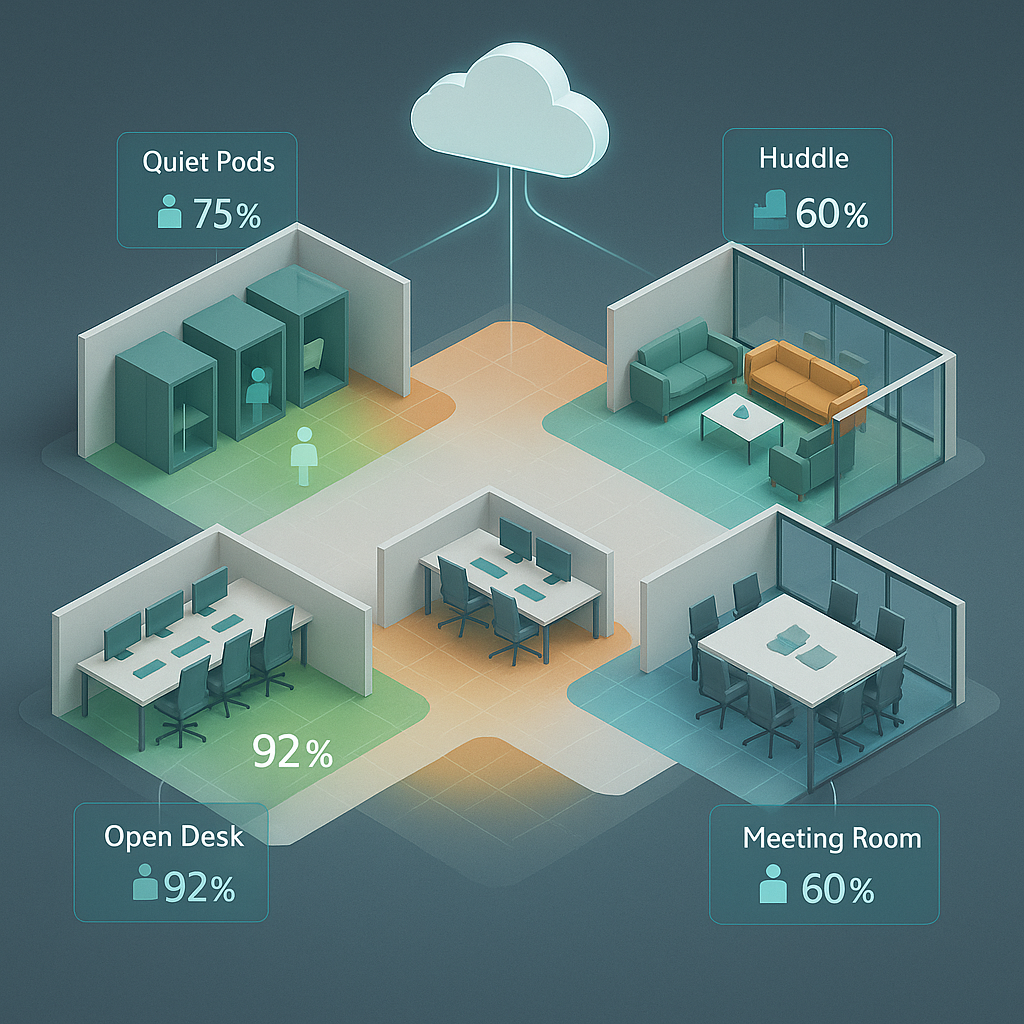Tiny Spaces Shine: Nested Areas of Interest Unlock Hidden Values in the Office
The office today must offer a compelling reason for employees to commute. It’s no longer just a place to plug in; it’s a destination! While broad space utilization metrics are important, a hidden gem, and often the source of employee satisfaction or frustration, lies in its often-overlooked, tiny spaces. These are the spaces that facilitate micro-interactions and individual needs, real estate innovation and experimentation…
Unlocking the Micro-Moments: PointGrab’s CogniPoint Nested Area of Interest
PointGrab’s CogniPoint sensors, with its innovative Nested Area of Interest (AoI) capability, can provide crucial usage feedback. Beyond counting humans in large well defined spaces, Nested AoI allows facility managers, workplace strategists, and HR leaders to define and monitor specific “tiny spaces” within a larger area. This provides unprecedented visibility into how employees interact with selected amenities, show ROI for innovation, enhancing the employee experience, and managing resources more effectively.
By measuring behaviors the analytics applications can understand usage (count people at a space), frequency (how many times is it used per day?) and duration (how long do people linger?).
Let’s explore some examples of the actions derived from such tiny space monitoring, the often-overlooked corners of the office:

Coffee Stations, Water Coolers: Fueling Connection and Productivity
Coffee stations are more than just a place to grab a caffeine fix; they’re informal collision points, vital for spontaneous interactions and team bonding.
- CRE Decisions: Data on usage peaks can inform staffing for maintenance, replenishment schedules, and even the strategic placement of additional coffee machines. Low usage might suggest a need to relocate or enhance the amenity.
- Workplace Experience & Value: A constantly empty or poorly maintained coffee station can be a minor annoyance that adds up, subtly detracting from the office experience. Conversely, a vibrant, well-stocked station signals care for employees.

Digital Whiteboards: Igniting Innovation and Collaborative Productivity
These interactive tools are specifically designed for dynamic brainstorming, visual problem-solving, and impromptu collaborative work sessions. They facilitate information sharing in real-time, acting as a central hub for team innovation.
- CRE Decisions: High usage indicates a strong demand for collaborative surfaces, prompting a need for more such devices or dedicated huddle spaces integrated with these boards. Conversely, low usage might suggest issues with placement, a need for user training, or broken equipment. This data directly justifies investment alignment and adjustment of technology.
- Workplace Experience & Value: Easy and consistent access to these collaborative tools directly encourages spontaneous innovation and agile problem-solving. Frustration can quickly arise when these vital resources are constantly occupied or unavailable, hindering teamwork. By optimizing their availability and ensuring they are well-utilized, the office truly “earns the commute” by providing a dynamic, interactive environment for creative work that is difficult to replicate effectively at home.

Digital Signage: Optimizing Navigation and Information Flow
These strategically placed screens serve as crucial tools for real-time information dissemination, wayfinding, and guiding employee flow within a large office space or building. They help to reduce search time and optimize traffic, ensuring a smoother daily experience.
- CRE Decisions: Data on screen engagement can inform the strategic placement of new screens, optimize the refresh rate of displayed content, and highlight areas where more intuitive wayfinding is needed. For example, high traffic past a screen with little interaction might suggest irrelevant content or poor visibility, while consistent engagement can justify expanding such installations.
- Workplace Experience & Value: Effective digital signage significantly improves the speed of orientation for employees and visitors, reducing wasted time and potential frustration associated with navigating a large or complex floor plan. By providing real-time information, such as room availability or navigation or just enterprise news, these screens contribute to corporate culture, efficient office movement, and overall value of the workplace.
Phone Booths & Focus Rooms: Enabling Concentration and Privacy
In open-plan offices, dedicated quiet zones are crucial for focused work and private conversations.
- CRE Decisions: High occupancy rates and long durations indicate a scarcity of quiet spaces, prompting investment in more phone booths or reconfiguring existing space. Data can also reveal peak demand times, allowing for more strategic communication about availability.
- Workplace Experience & Value: A significant source of employee frustration in open offices is the lack of quiet spaces. “47% of employees reporting that they find it difficult to stay productive at work when colleagues are taking calls at their desks without headphones.” Providing ample, accessible phone booths directly addresses this pain point, enhancing concentration and reducing stress, making the office a more productive and appealing environment than a noisy home.

Game Rooms & Recreational Areas: Fostering Connection and Recharge
These spaces, equipped with amenities like pool tables, foosball, or board games, are designed to encourage breaks, informal social interactions, and mental decompression. They serve as vital hubs for team building and a change of pace from focused work.
- CRE Decisions: High usage metrics can justify investment in more games space or expanding the variety. Low usage might prompt a review of the room’s location, accessibility, or the types of games offered. Data can also inform maintenance schedules for equipment.
- Workplace Experience & Value: A well-utilized game room signals a company that values employee well-being and encourages a healthy work-life balance within the office. As stated in the recent Gensler’s Global Workplace Survey 2025, better office experience adds a significant draw, making the office a more appealing and holistic
The Power of Granular Data: From Insights to Action
The insights from CogniPoint’s Nested AoI capability don’t just hit a report. This granular data feeds directly into real-time systems, creating a responsive office environment:
- Digital Signage: Display real-time availability of spaces, guiding employees to reduce search time.
- Resource Reservation Platforms: Usage data is automatically releasing unused booked spaces, promoting reservation of free areas and present availability of non-bookable inventory and tiny spaces.
- Facility Management Systems: Trigger cleaning and maintenance services for high-traffic tiny spaces based on actual usage, improving on the fixed schedule cost model.
- Employee Experience Apps: Provide personalized recommendations for available amenities or notify employees when a desired equipment becomes free.
- Energy and Maintenance Systems: Dynamically adjust lighting, HVAC, or even power down unused equipment in specific “tiny spaces,” contributing to significant energy savings and ESG goals.
- Analytics Systems: understand over time the value of the tiny spaces, unique equipment and office amenities
Measuring What Matters: Quantifying Workplace ROI
Investing in unique equipment and enhancing small spaces are crucial for “earning the commute” and boosting employee satisfaction. With CogniPoint’s Nested AoI, these investments are no longer shots in the dark. Companies can now measure the actual usage and impact of these amenities against their cost and use this real time insights for improved employee experience



